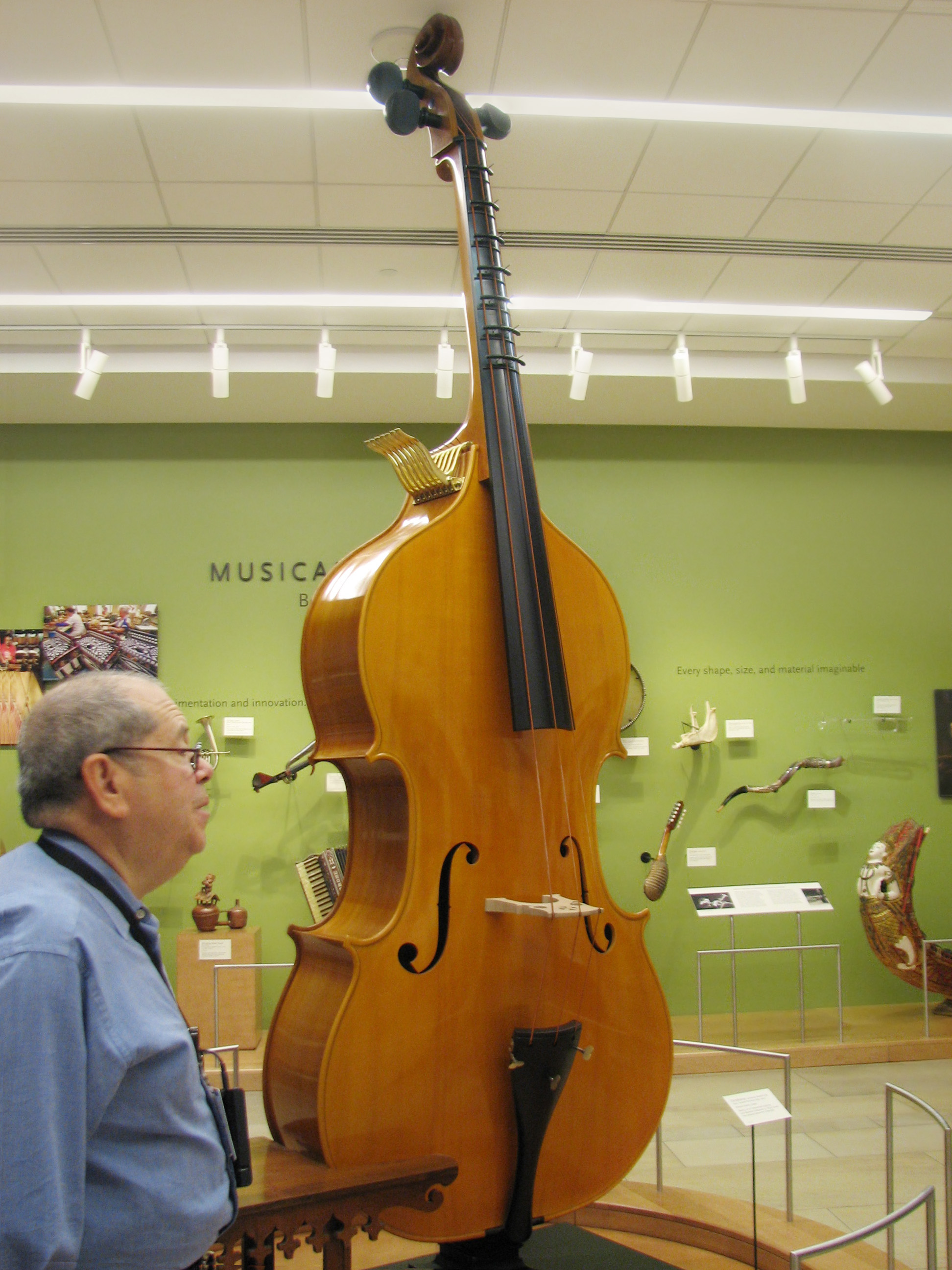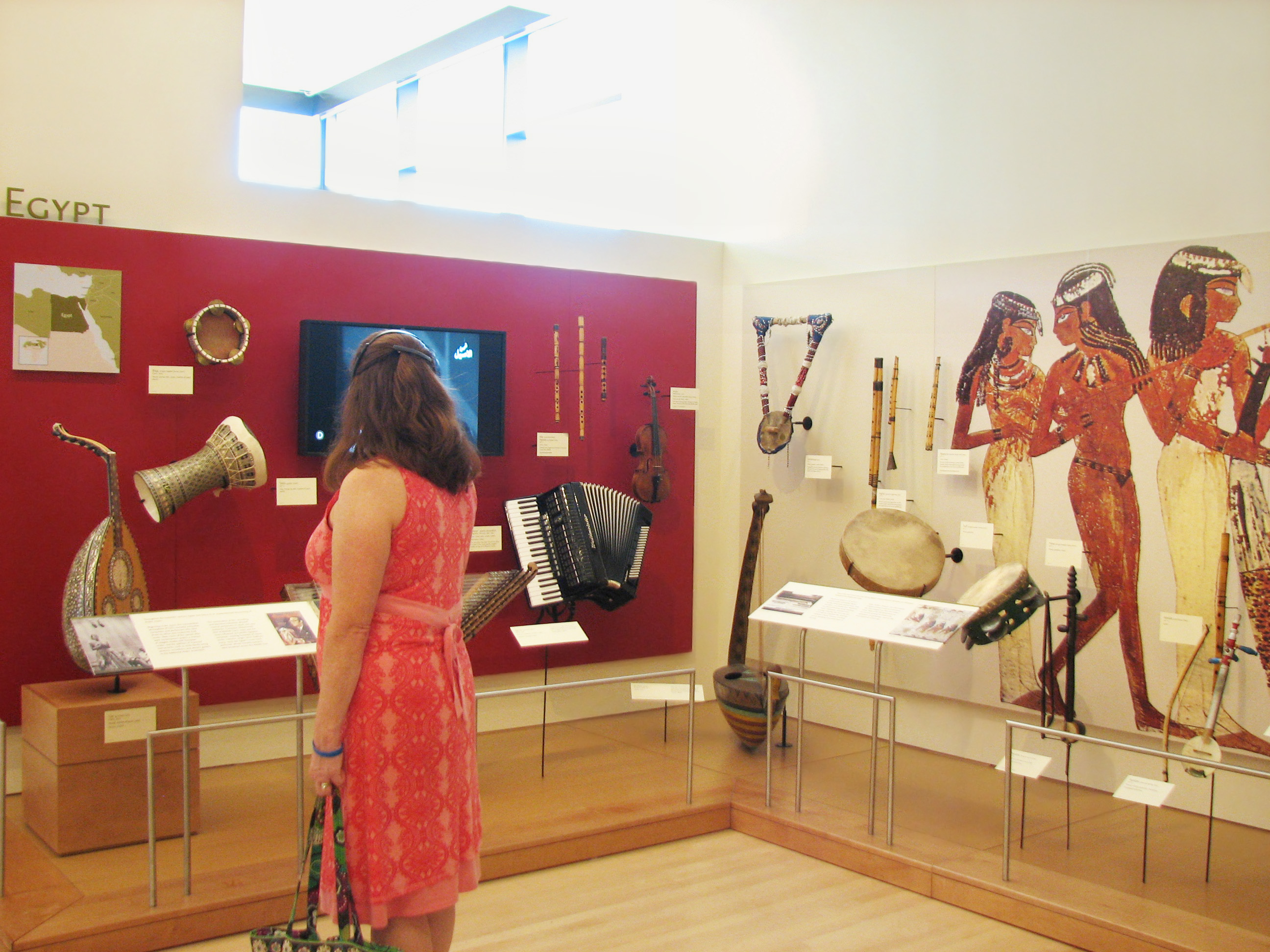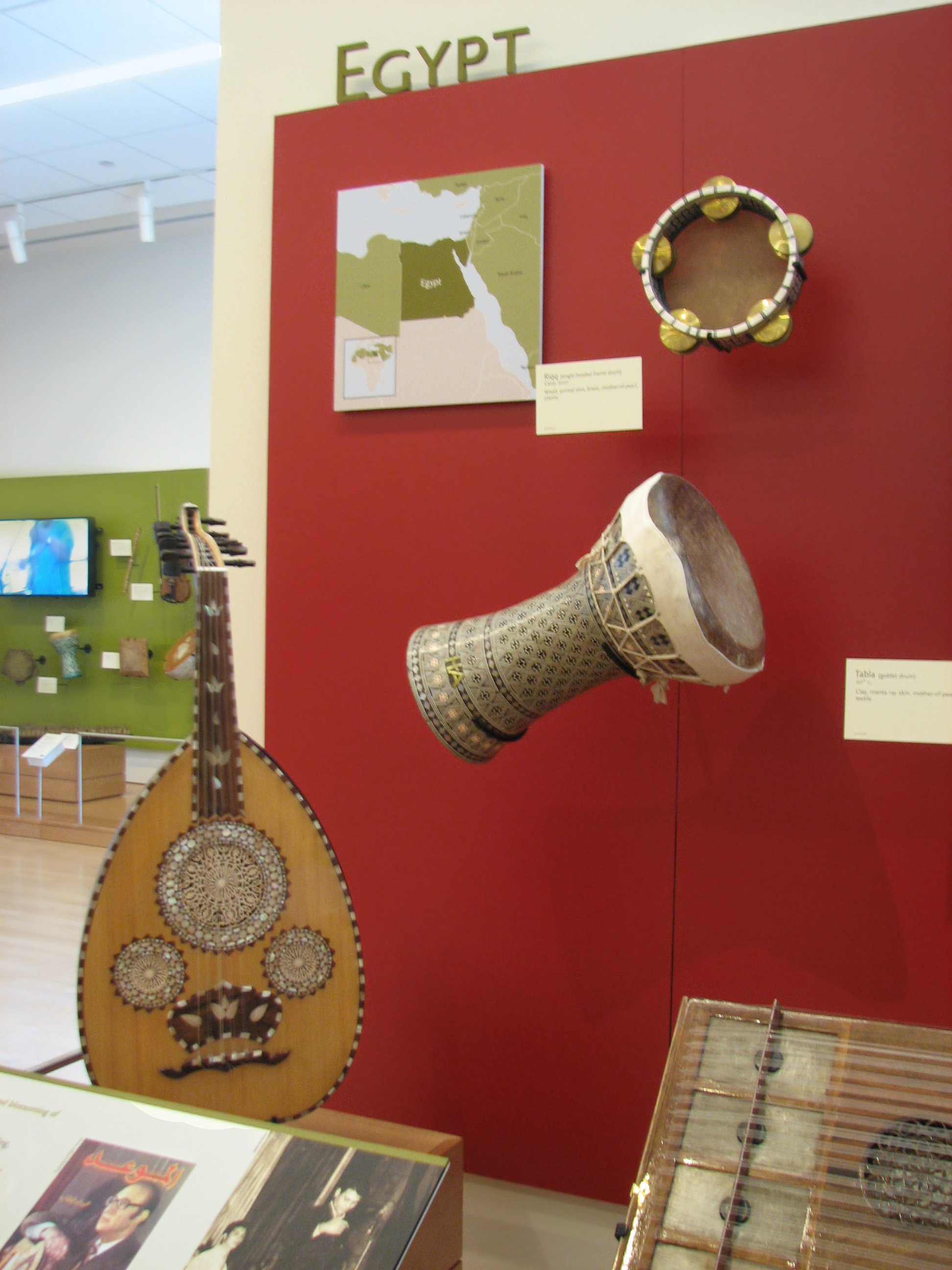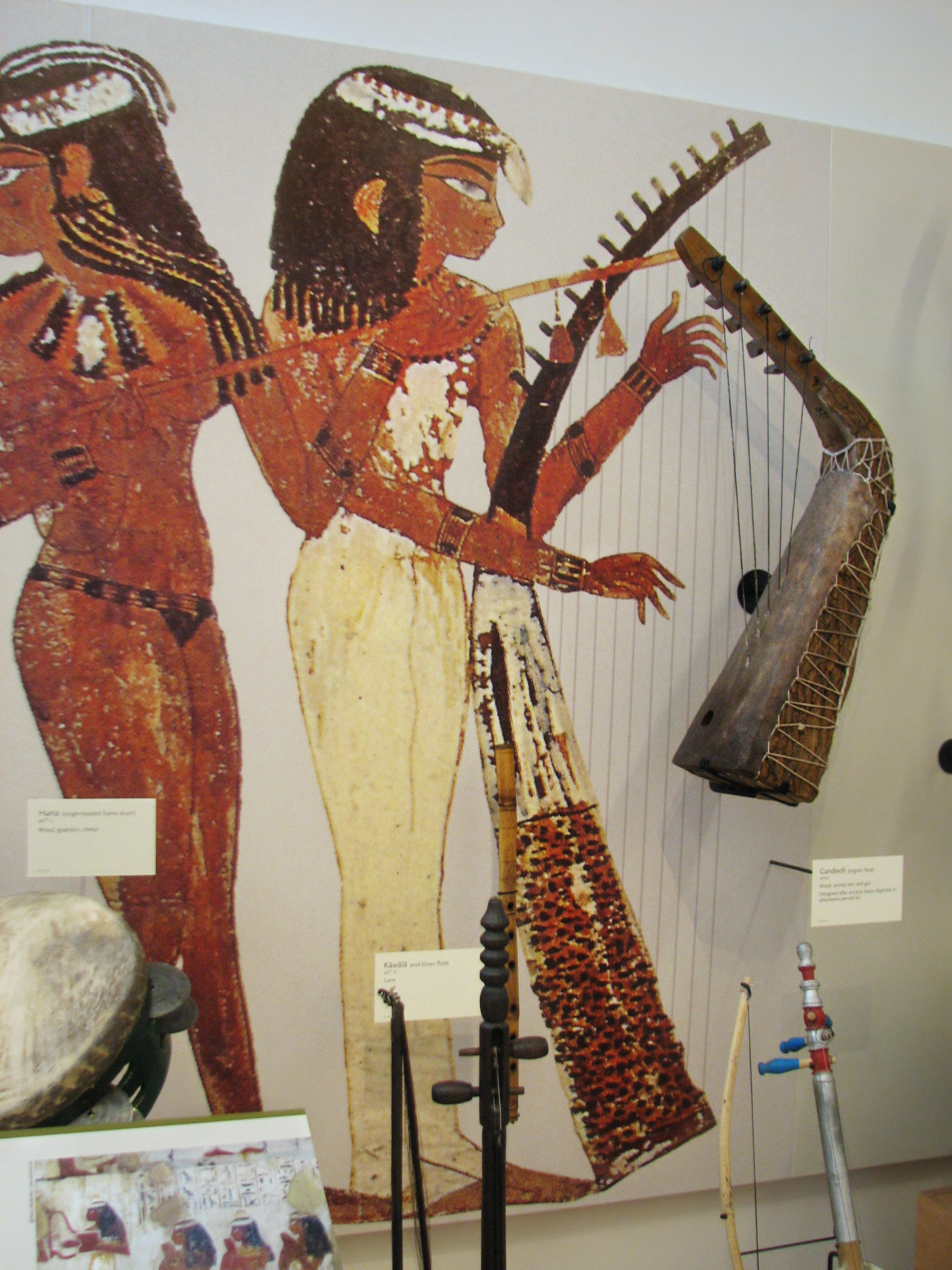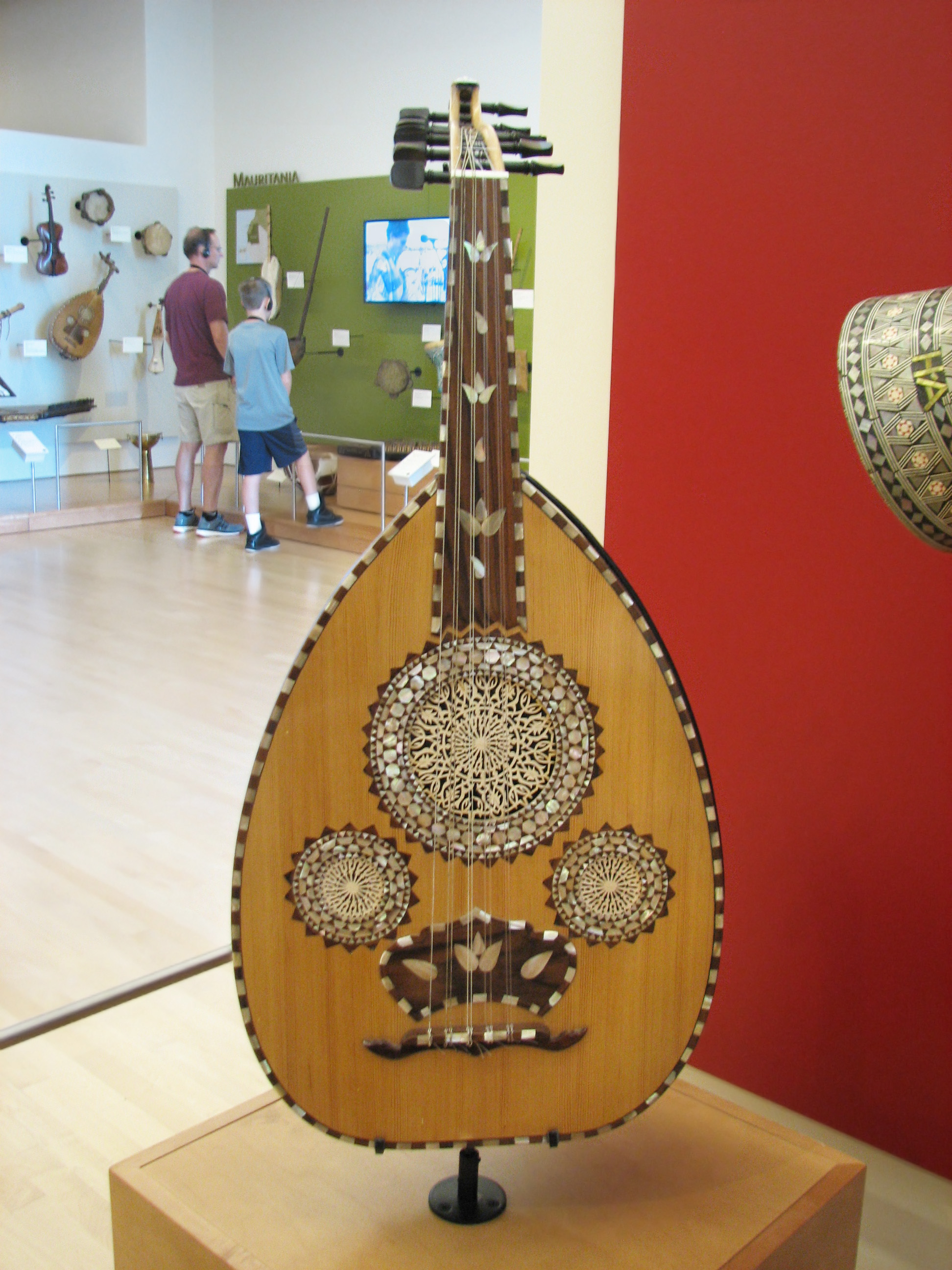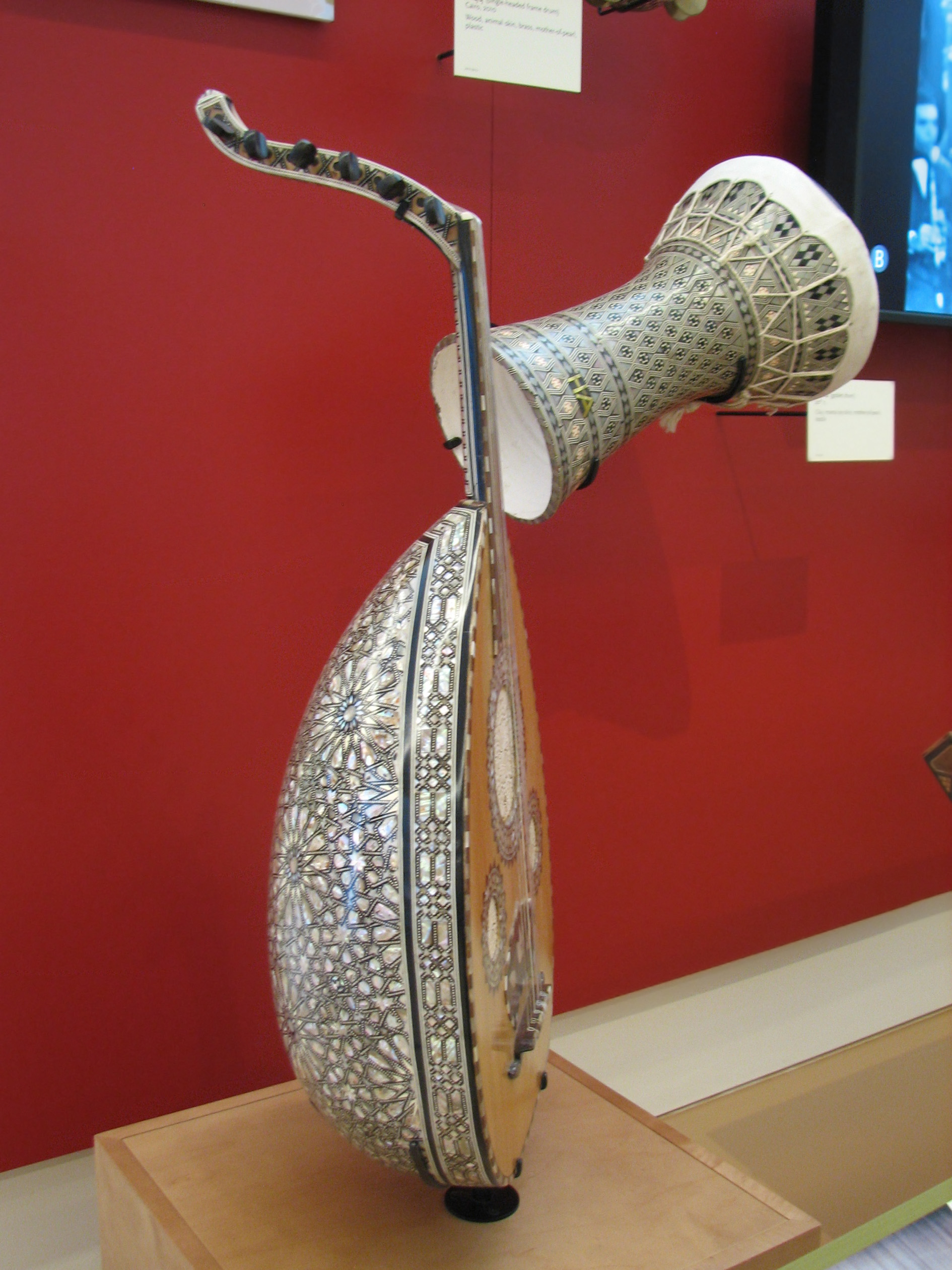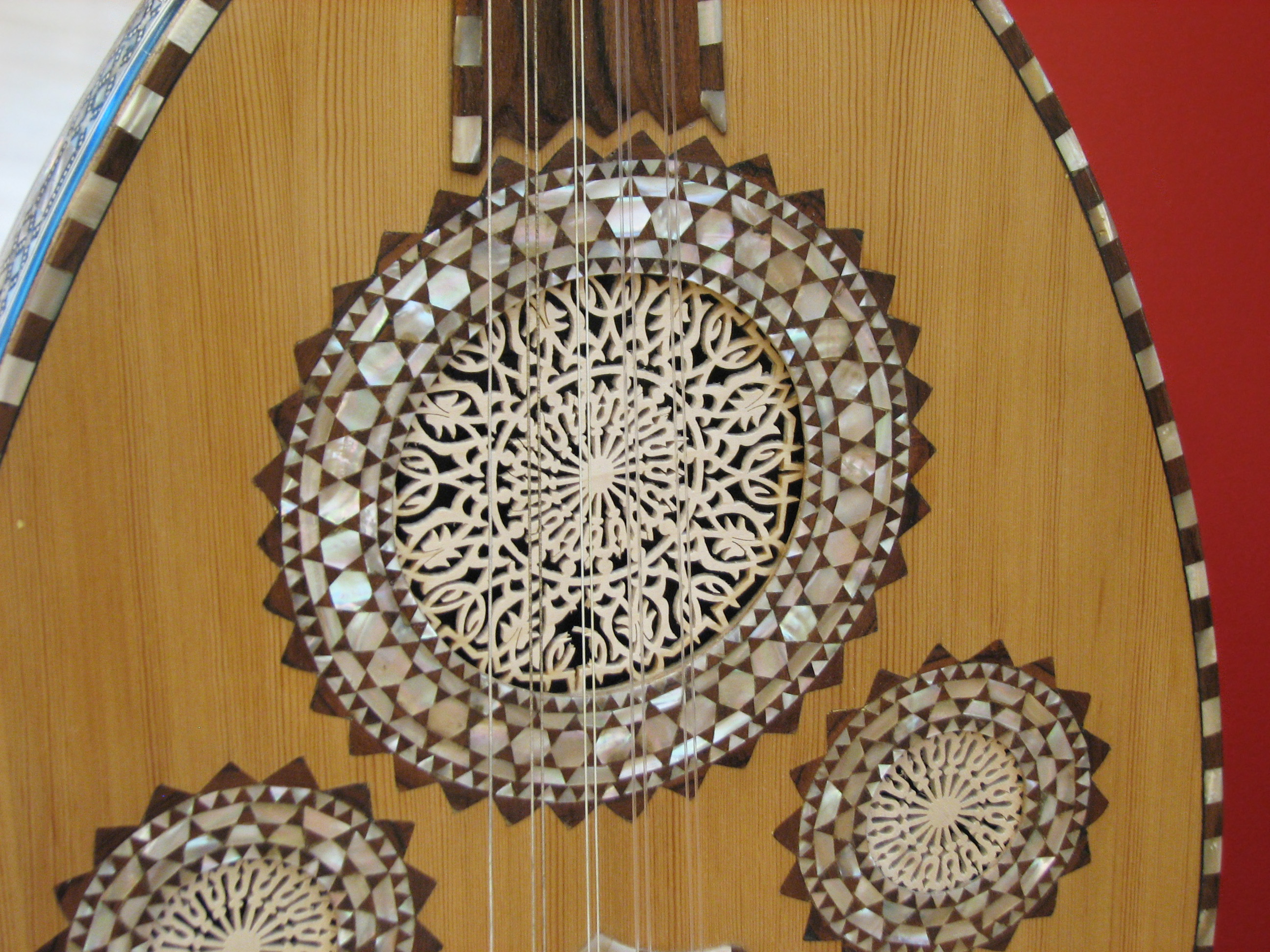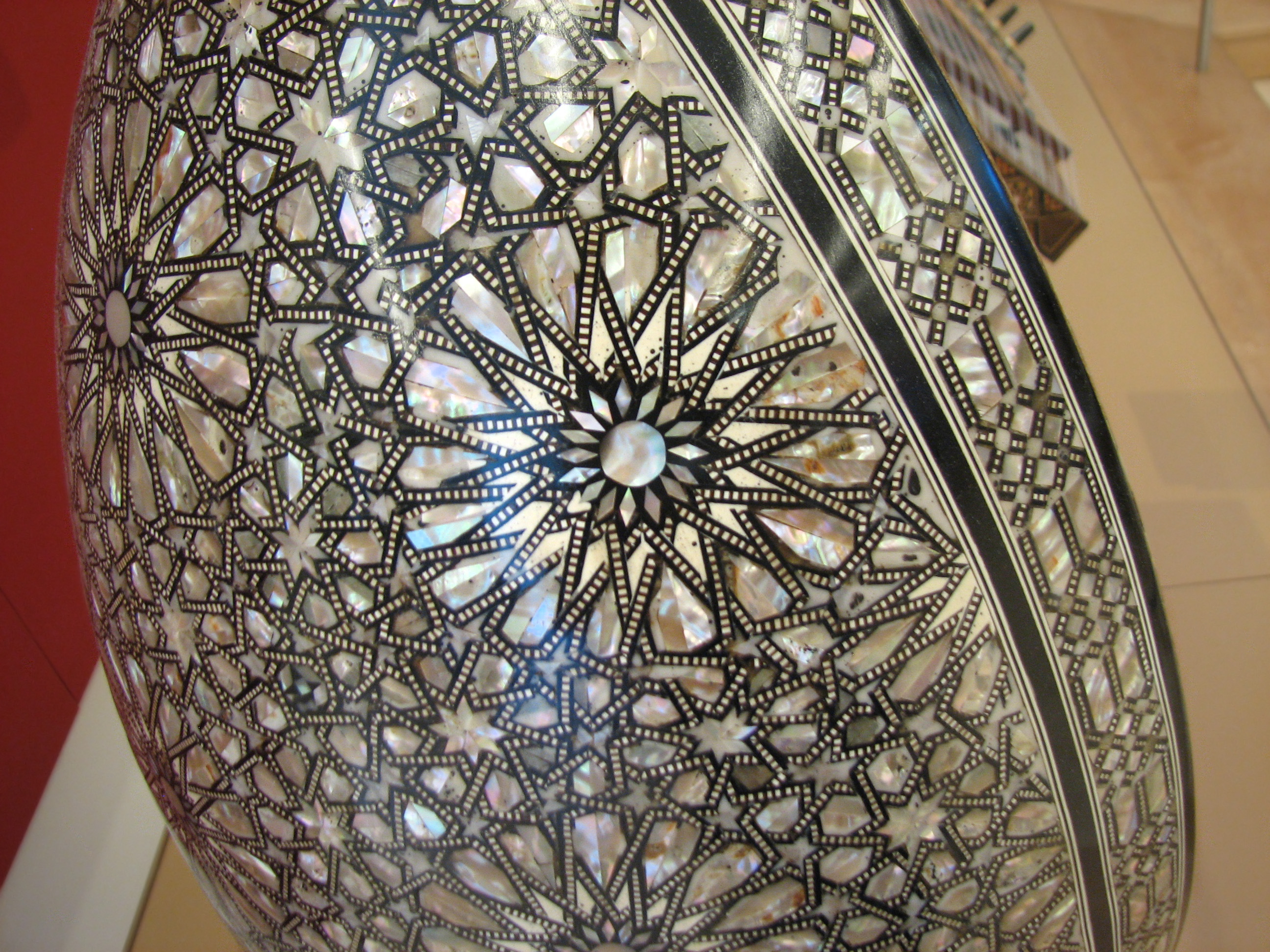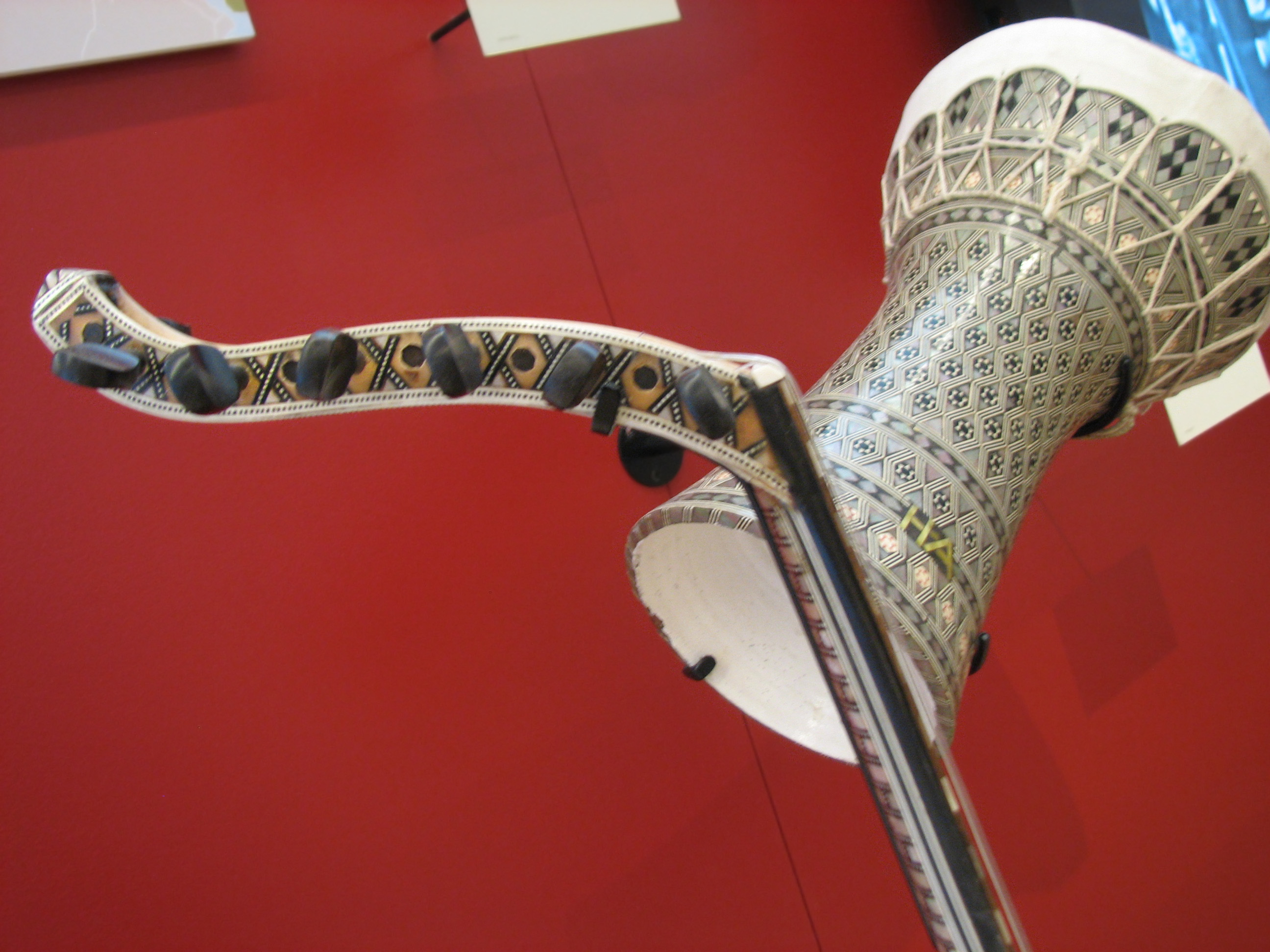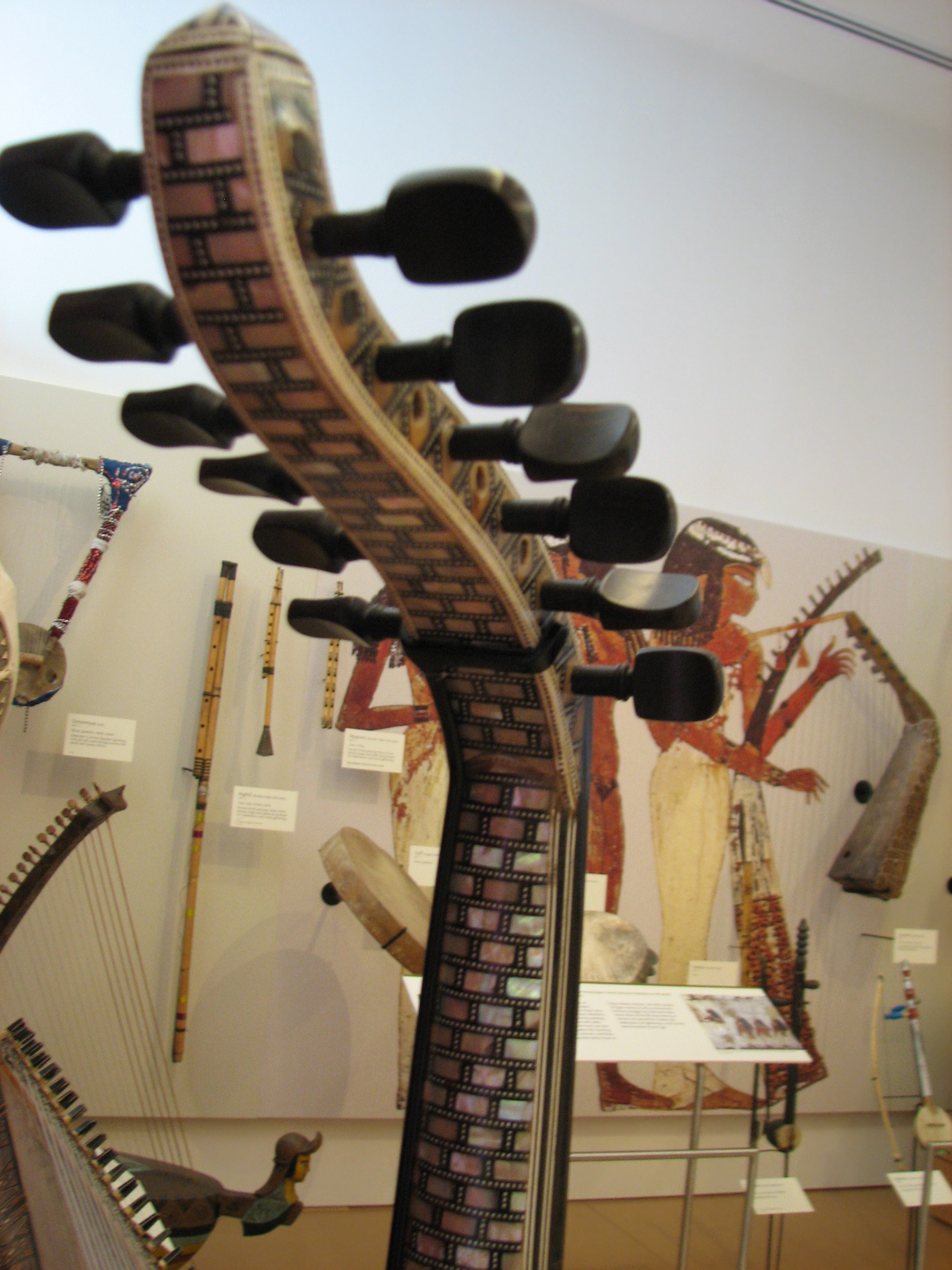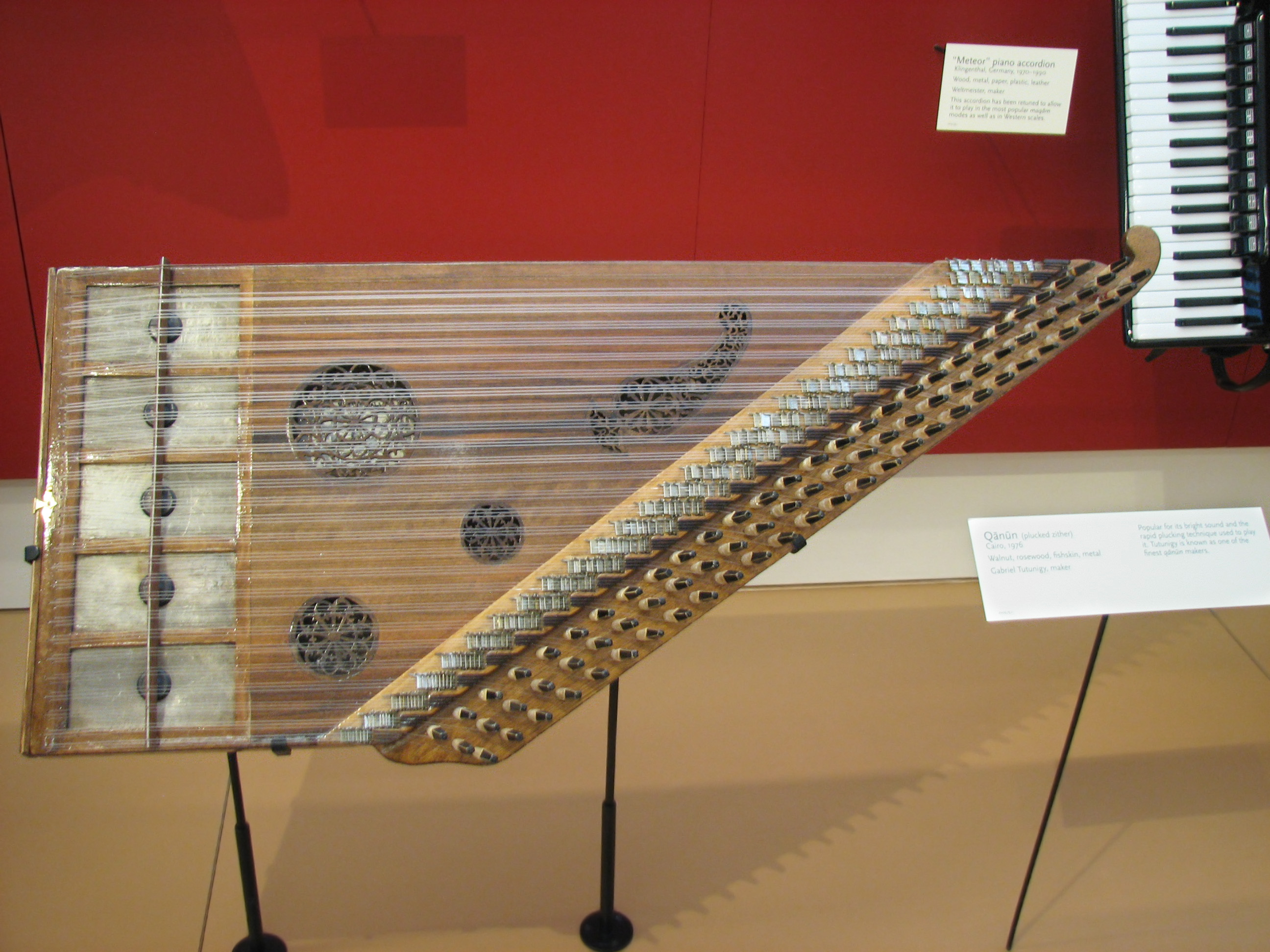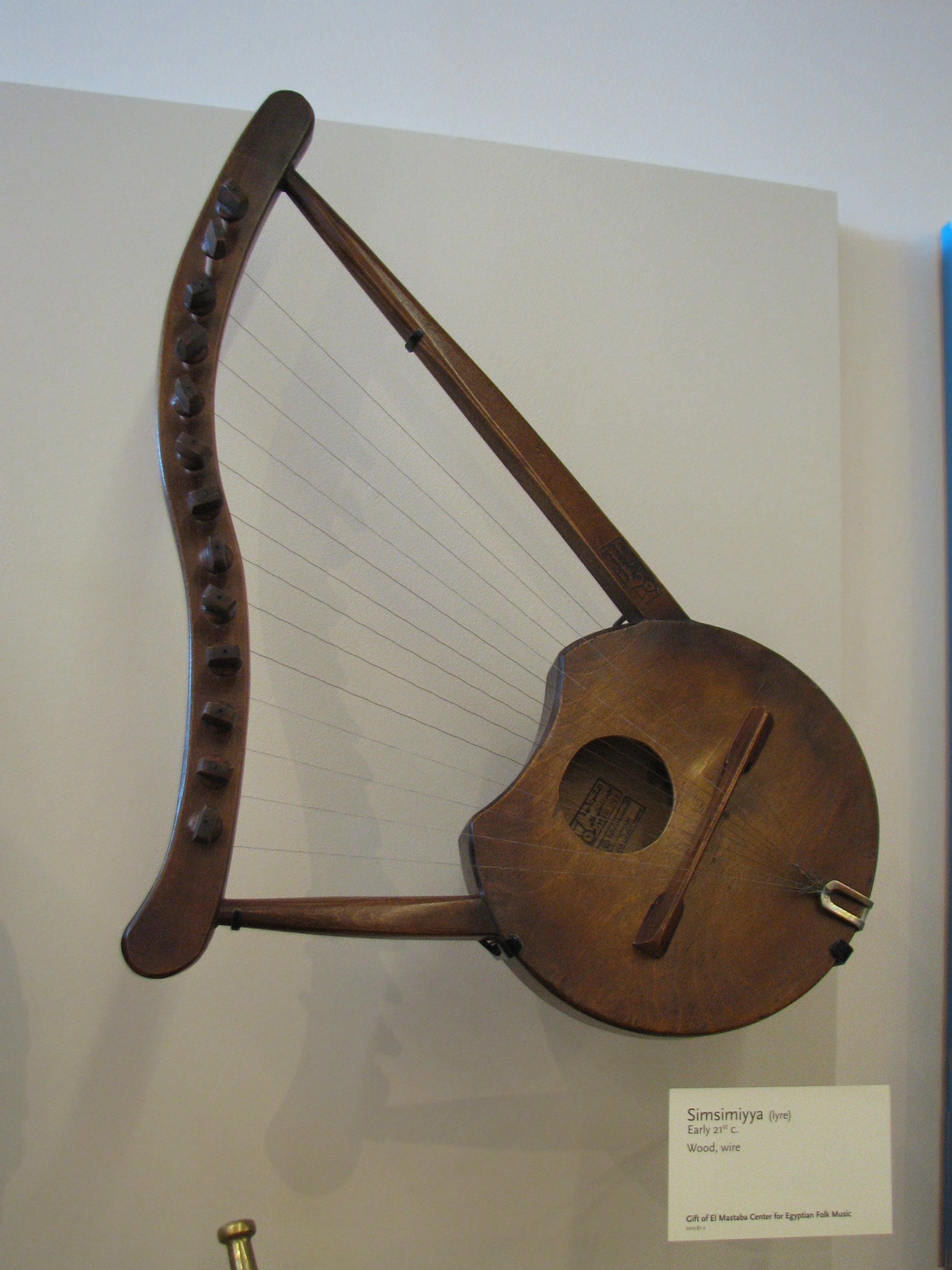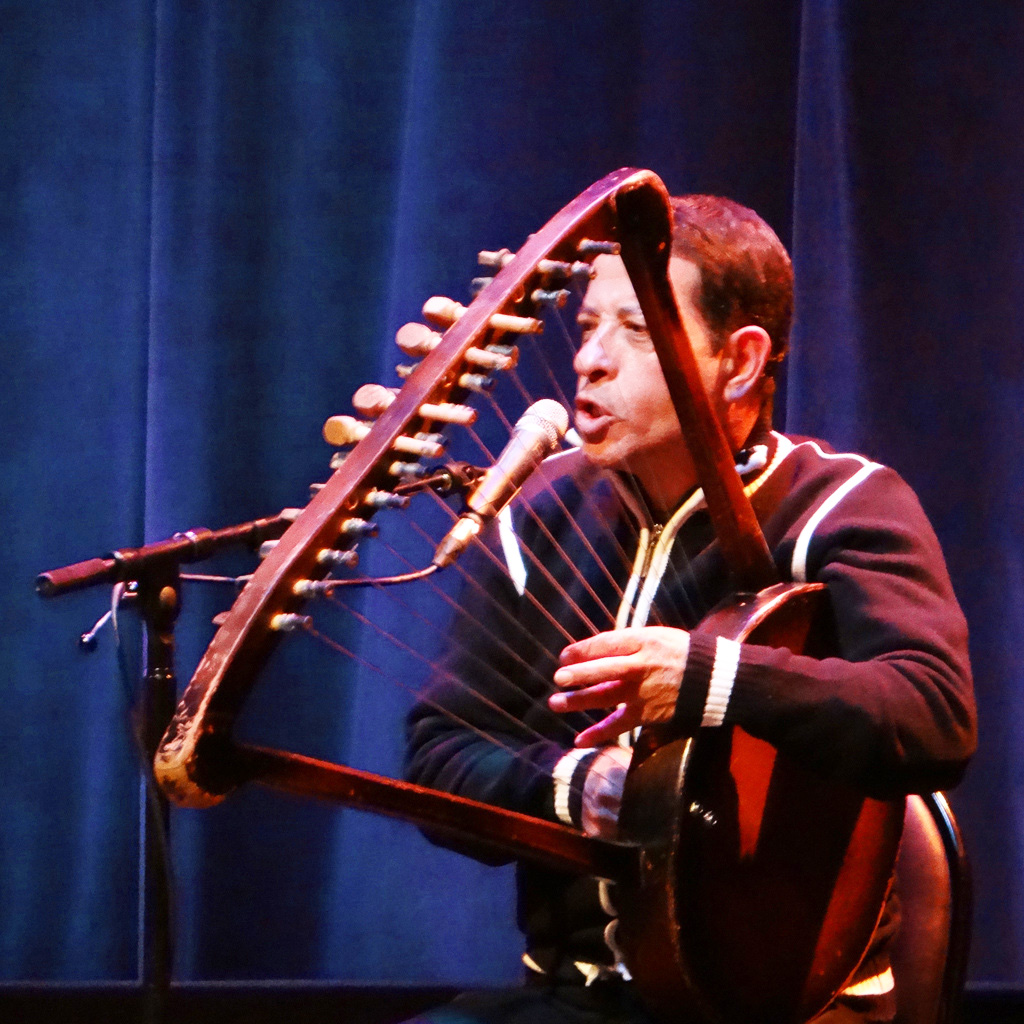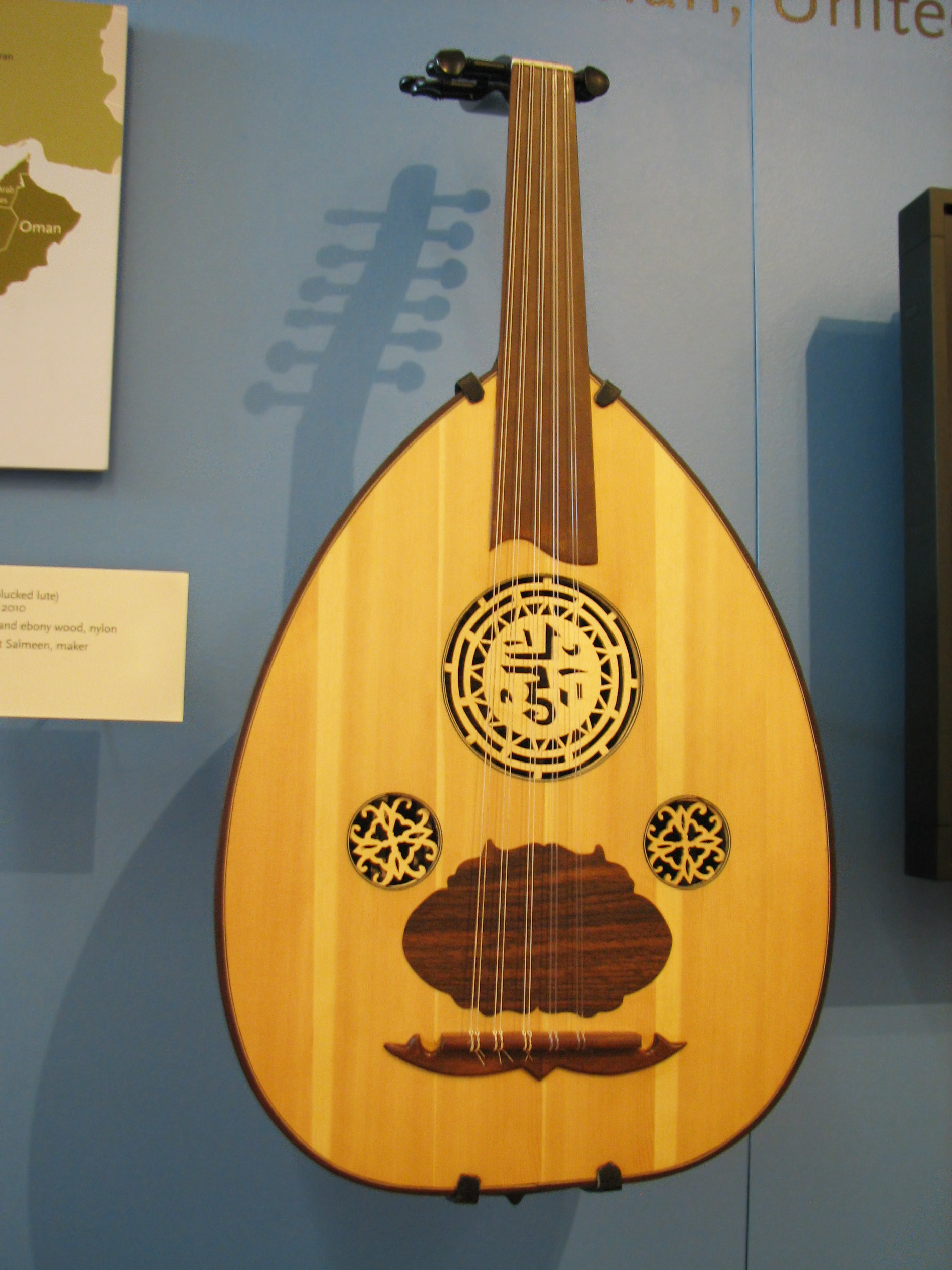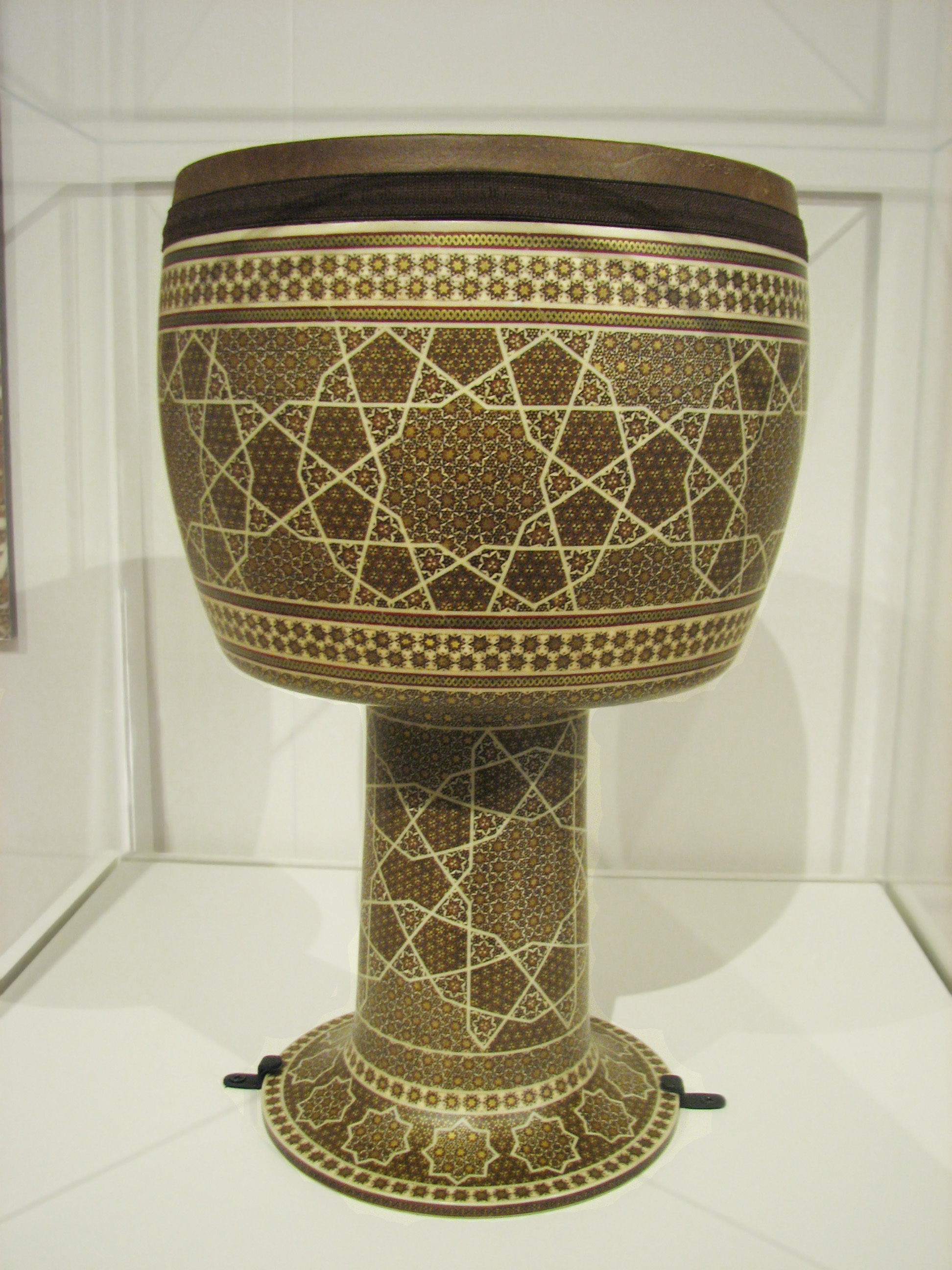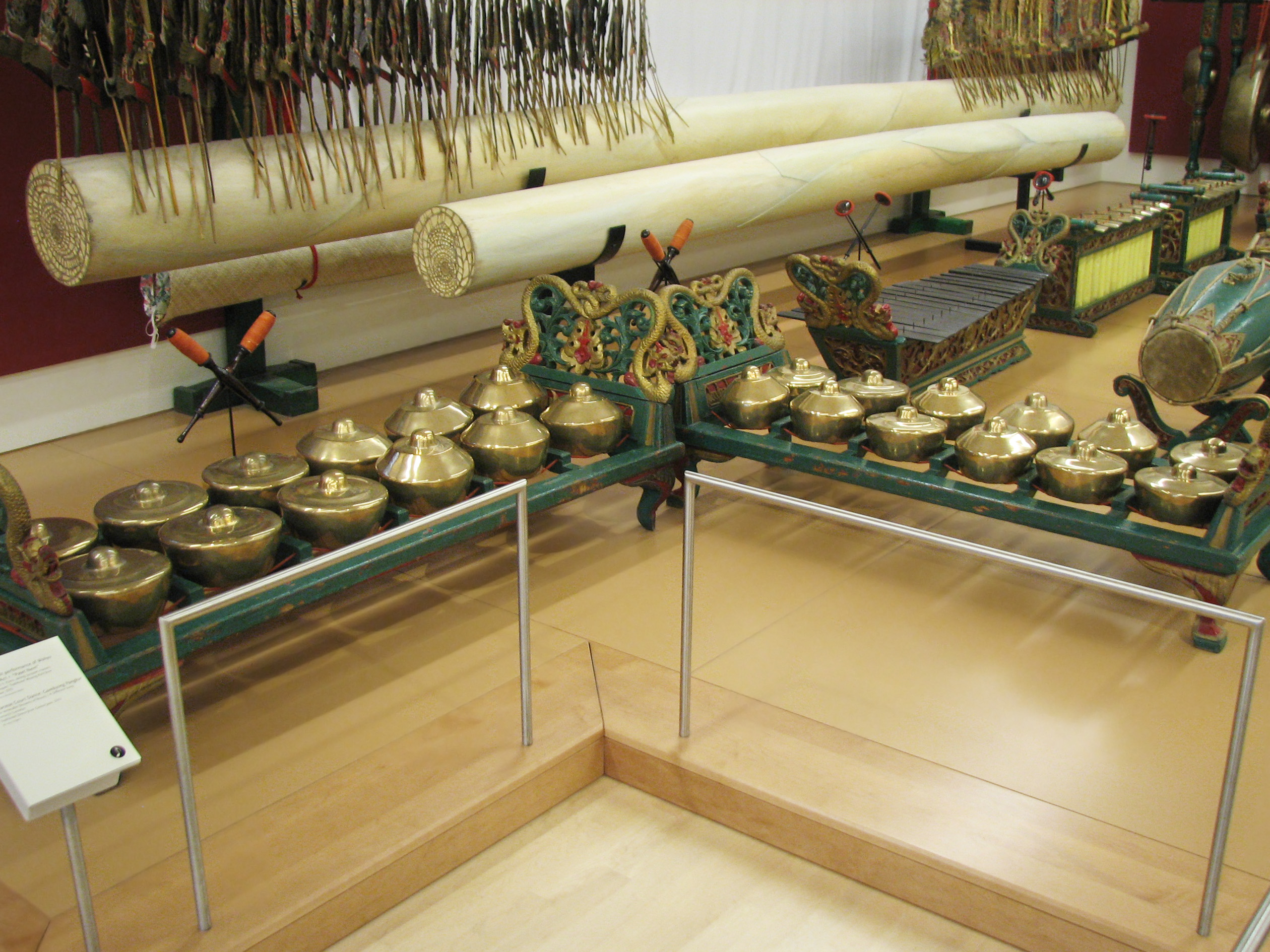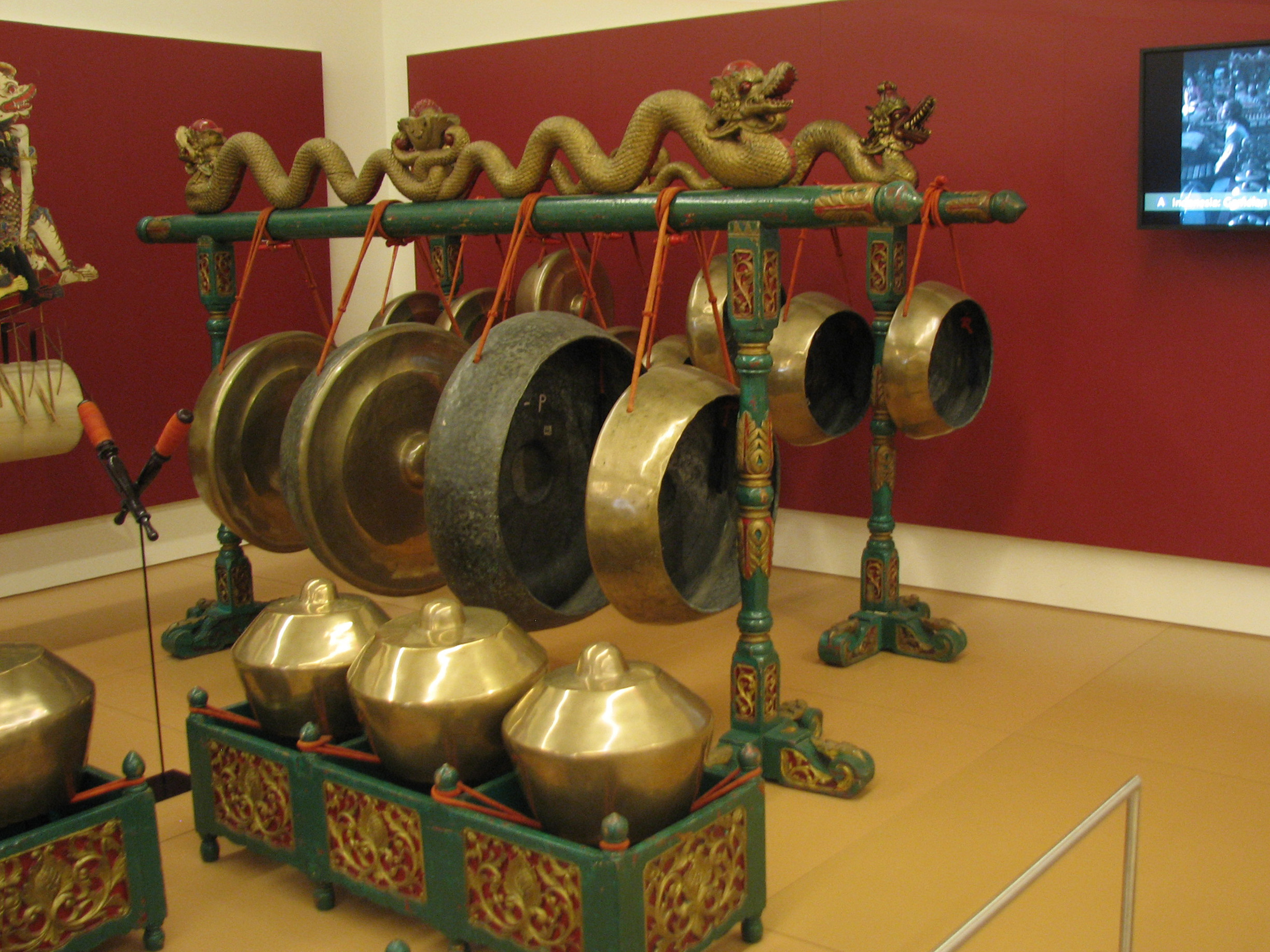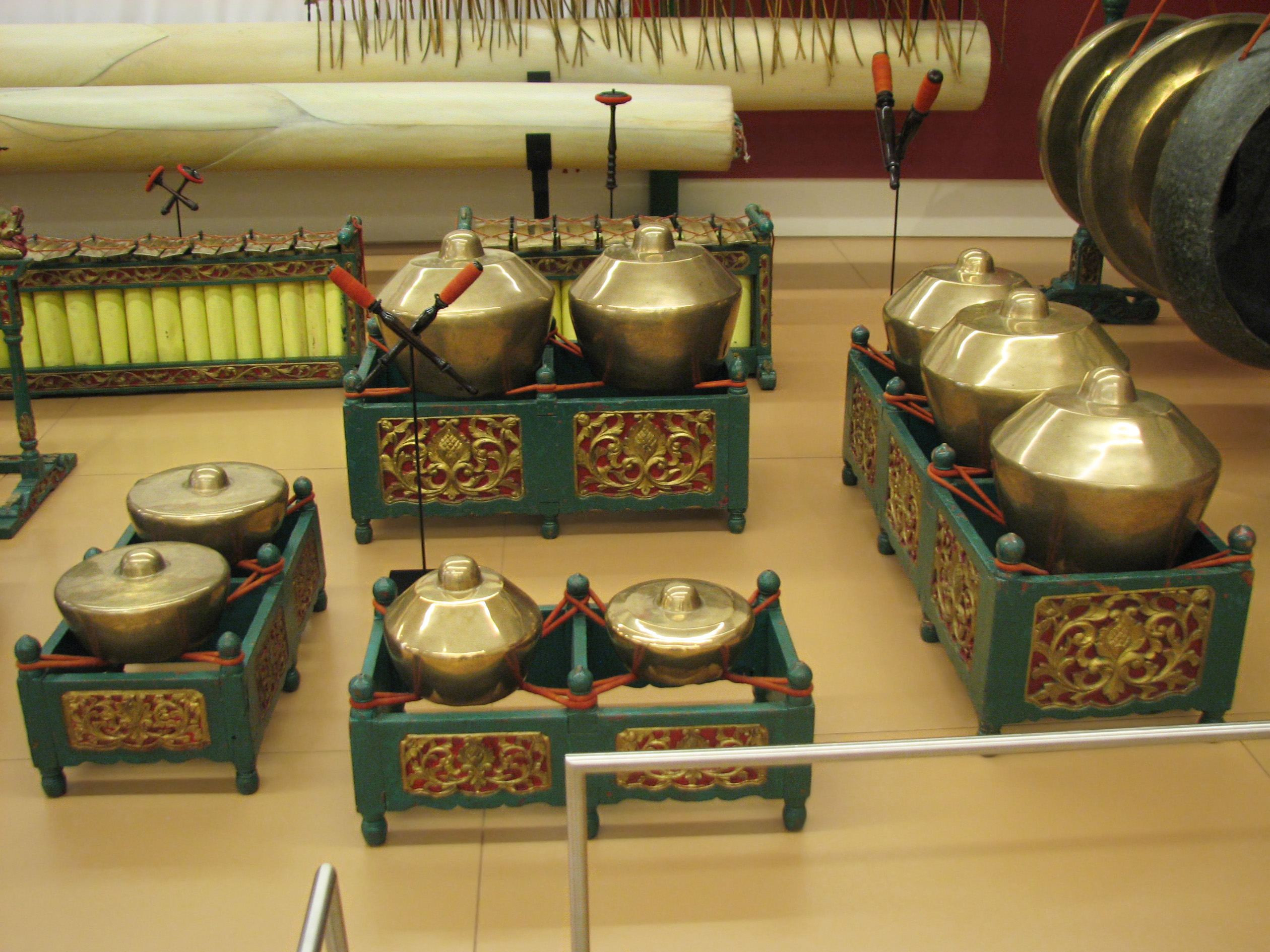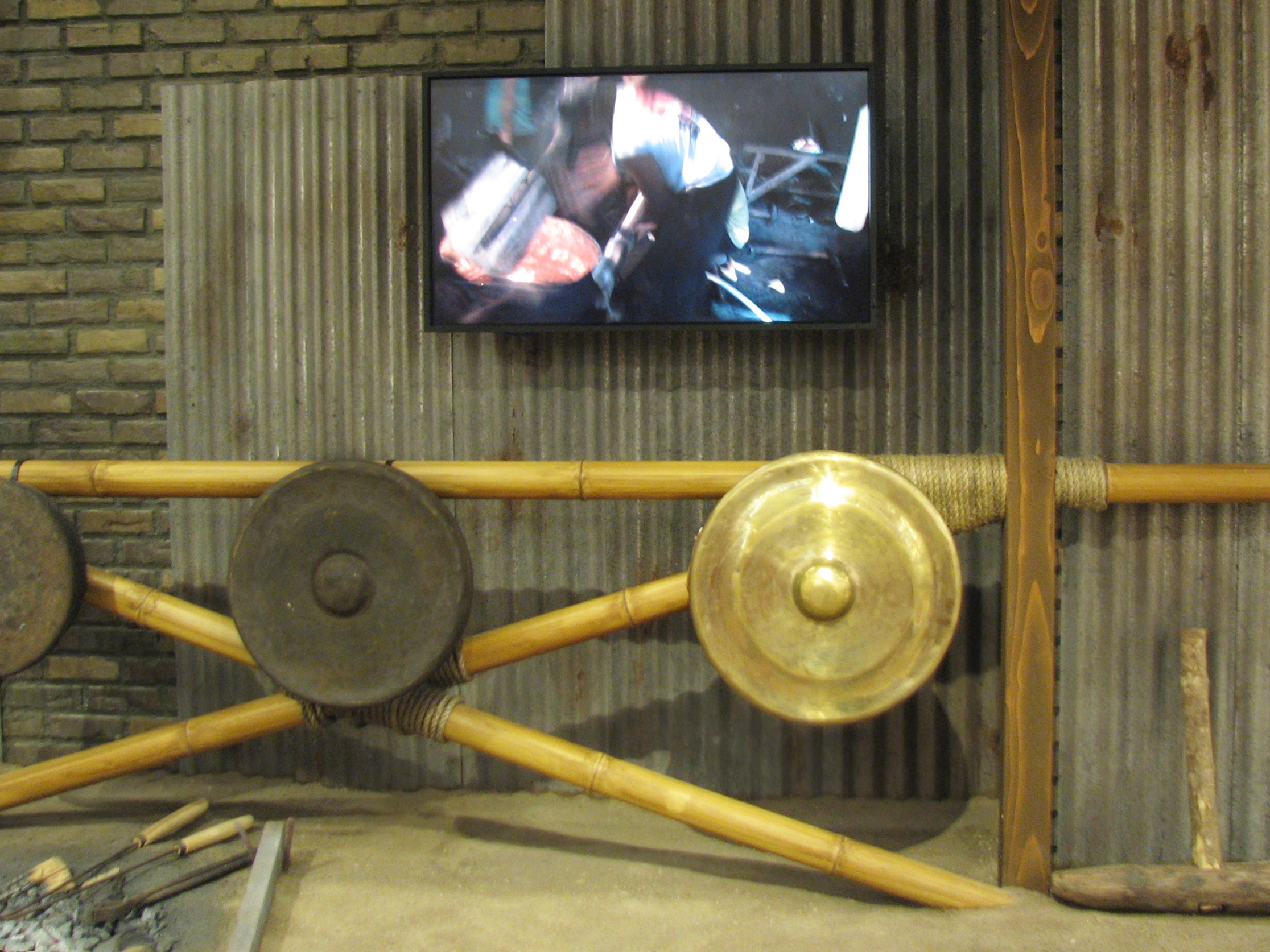|
In the "Experience" gallery, we learned the funny knobs are there because that's the area that gets struck. I did love playing with the smaller jar shaped ones and the big ones.
A giant drum featured a movie displayed on it in which we could try and follow along with the beats.
Returning back to Middle Eastern music, the Jewish area featured a video clip with the pianist Alice Herz Sommer, who lived to 110. She credits music wtih giving her the strength to endure in the hideously evil conditions of the Holocaust.
In the Latin Americal galleries, we heard on woman say, "After a while, they all start to sound the same."
By the time we'd made it to the Irish display, I made the comment, "Here's some music that sure doesn't sound like the rest!" I made sure to get photos of a drum signed by the Chieftains:
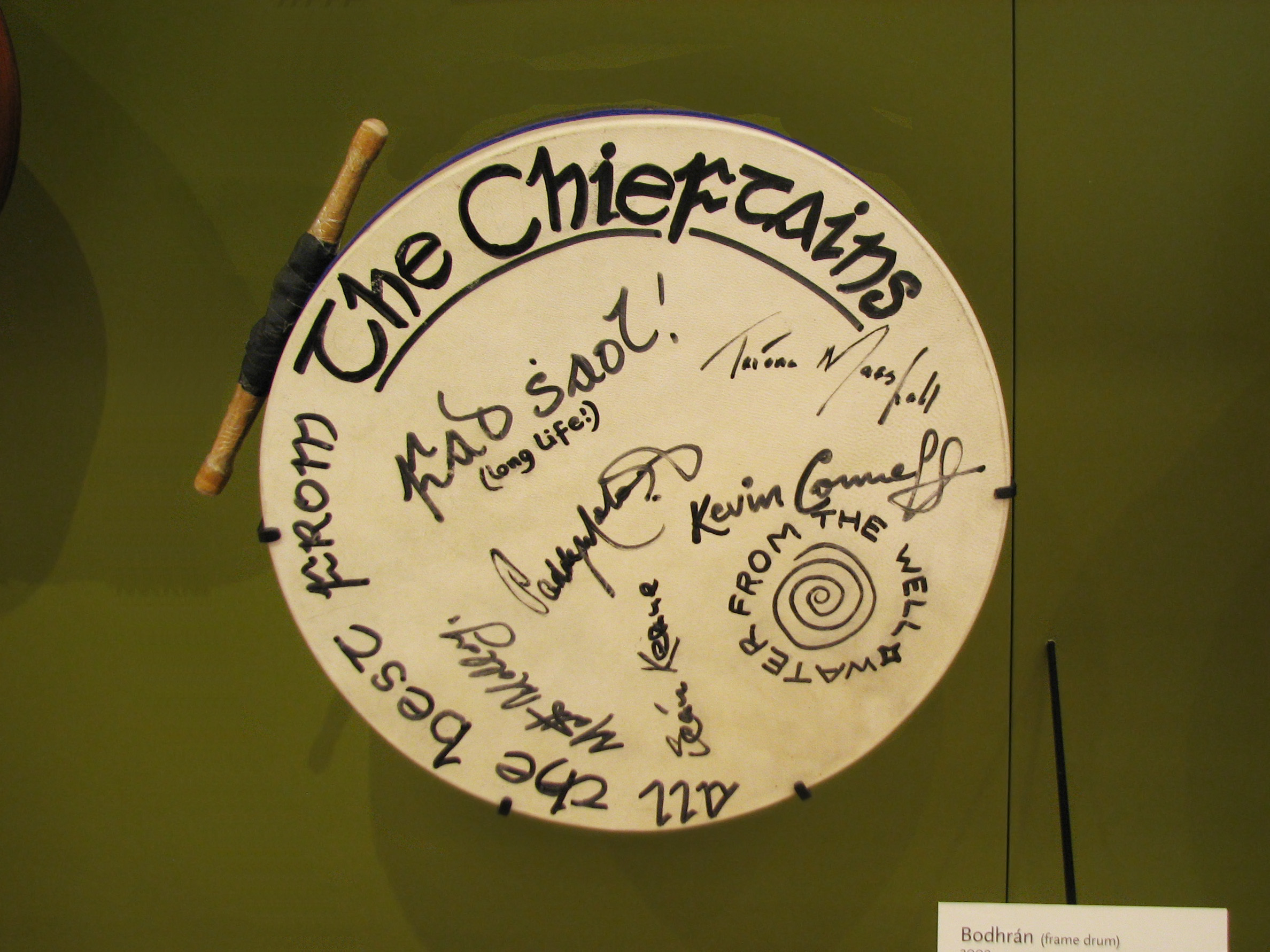
Bodhran (frame drum)
2009
Wood, goatskin
"Proponents of traditional Irish music since the 1960s, the Chieftains signed this drum, which they played in a 2009 concert in Minnesota. Displayed with beater."
Anonymous gift
MIM 2011.175.1.1-2
All the best from the Chieftains
Paddy Moloney, Seán Keane, Kevin Conneff, Matt Molloy, and Triona Marshall, who plays the harp with them since Derek Bell died in 2002.
"Water from the Well" is an album the Chieftains did.
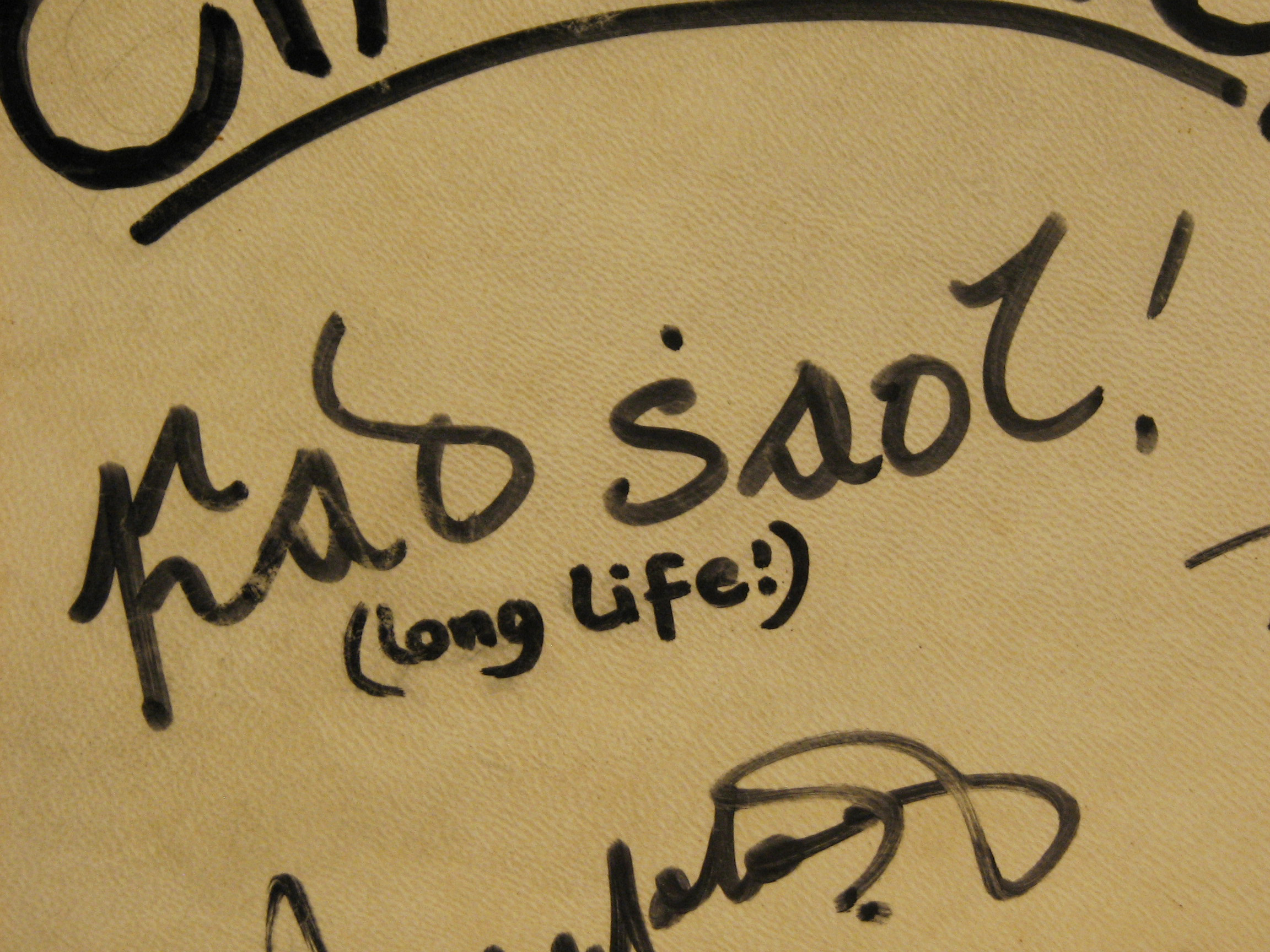
Fad Saol: "Fad" means "length" or "long," "saol" means "life; it is pronounced as fah-d seal
(from Wikihow)
|
|
By this time it was 1:00pm, and Julia and I were hungry and tired. And we hadn't explored everything on the second floor, let alone the first floor. Lunch revived us. Gratefully, there were clearly known gluten free items: a lentil soup that was excellent, and a Greek salad which was tasty.
We decided to stay on the first floor and see some of the exhibits there. Mechanical instruments, both small and huge, are among them.
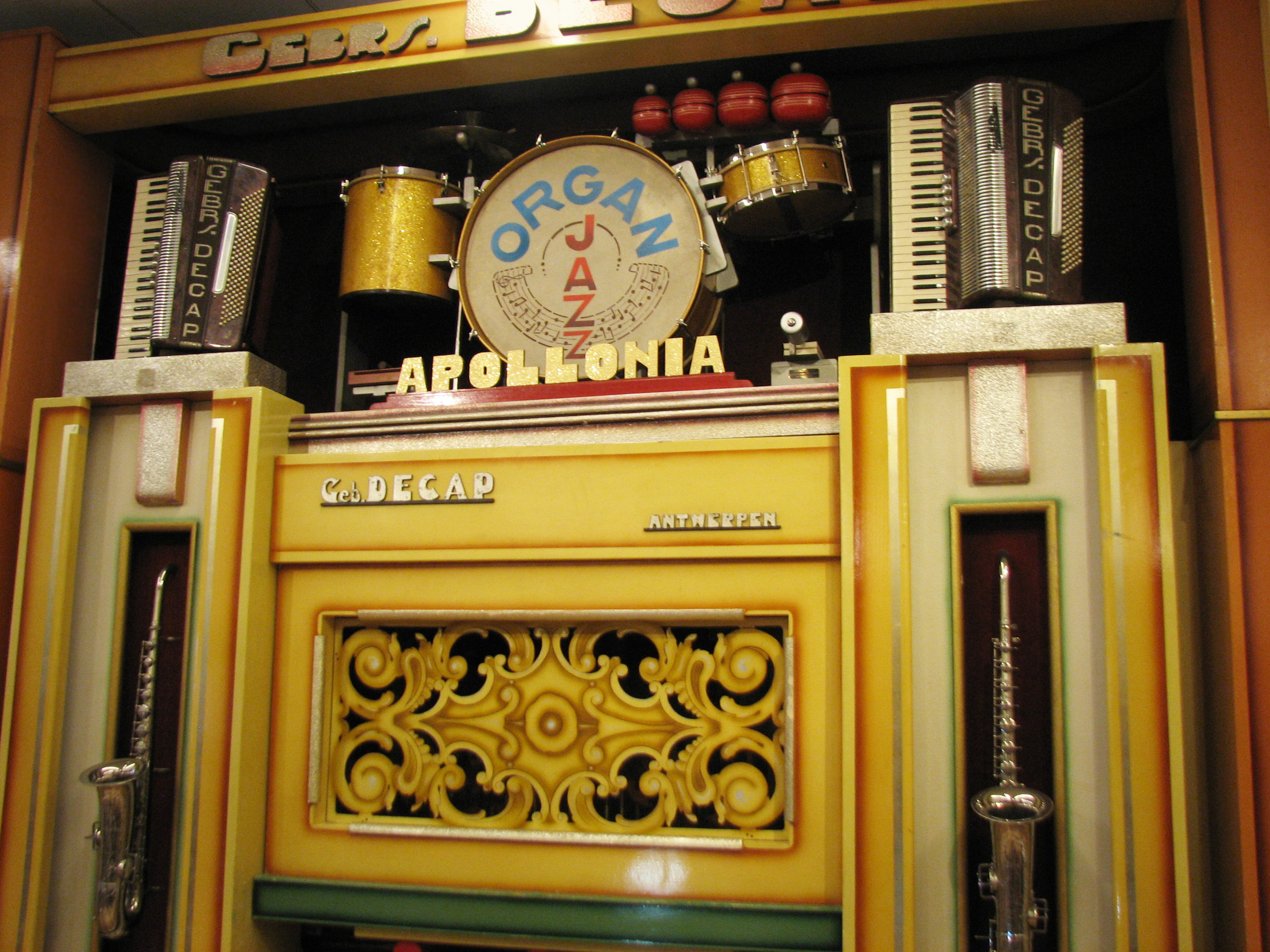
Apollonia Organ #1002
I neglected to photograph the info card, but I found a website which has the details:
"Measuring over twenty-five feet long and weighing over two tons, this dance organ was originally manufactured in 1926 as organ no. 1002 by the preeminent Antwerp firm of Theofiel Mortier, S.A. It was remanufactured into is present configuration by another famous Antwerp company, Gebroeders Decap, in 1950. The largest organs made by the Decap brothers were often given unique names; "Apollonia" is the female form of "Apollo," the Greek god of the sun and music. During its working life, this organ was owned by the firm Gebroeders M. & G. Tuegels, which provided organs for the popular circuit of dance halls and traveling shows. It remained in Teugels's collection until the mid-1980s, when it was imported into the United States by an American collector."
This video captures the demonstration we saw.
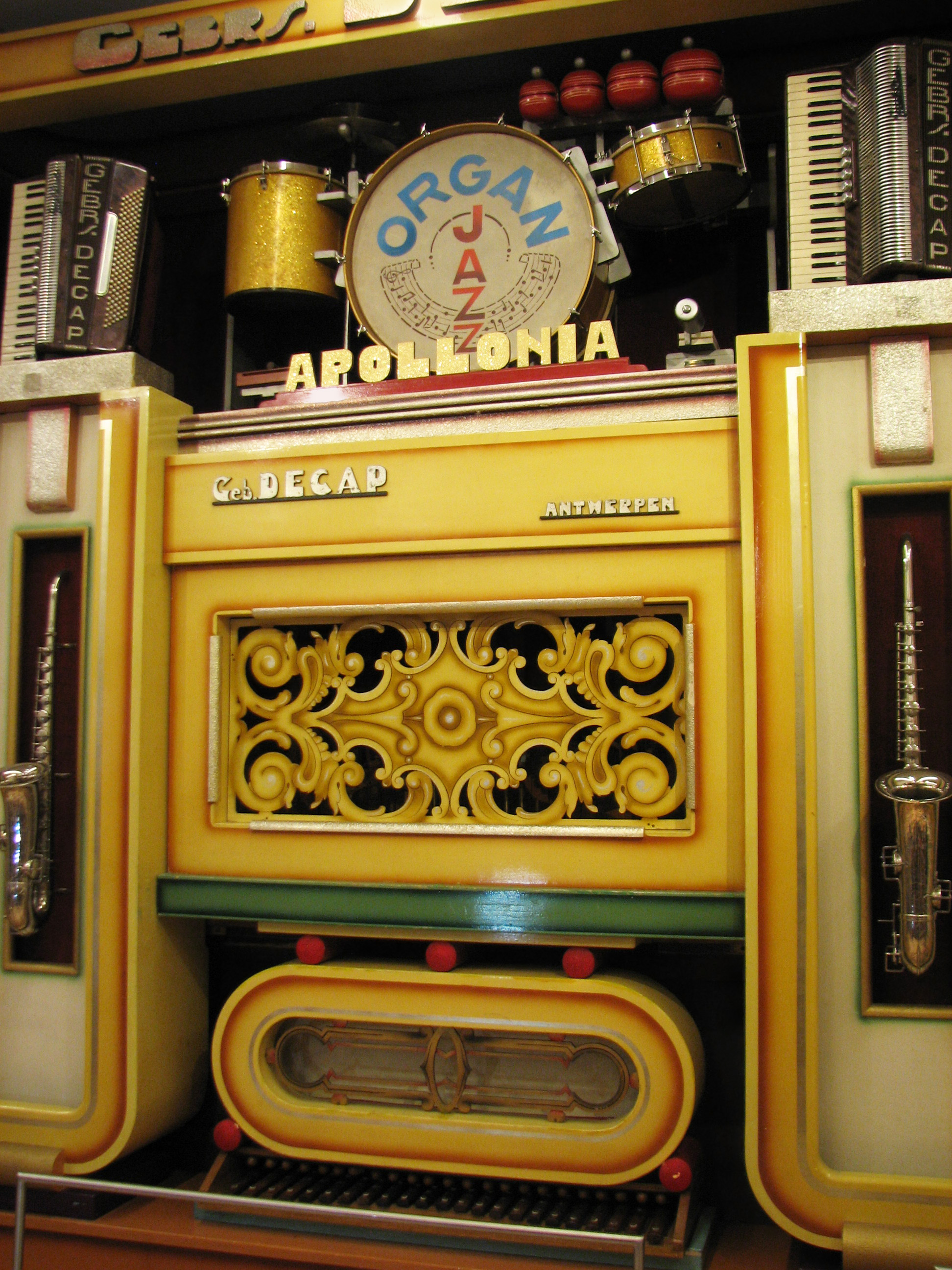
|
|
|

